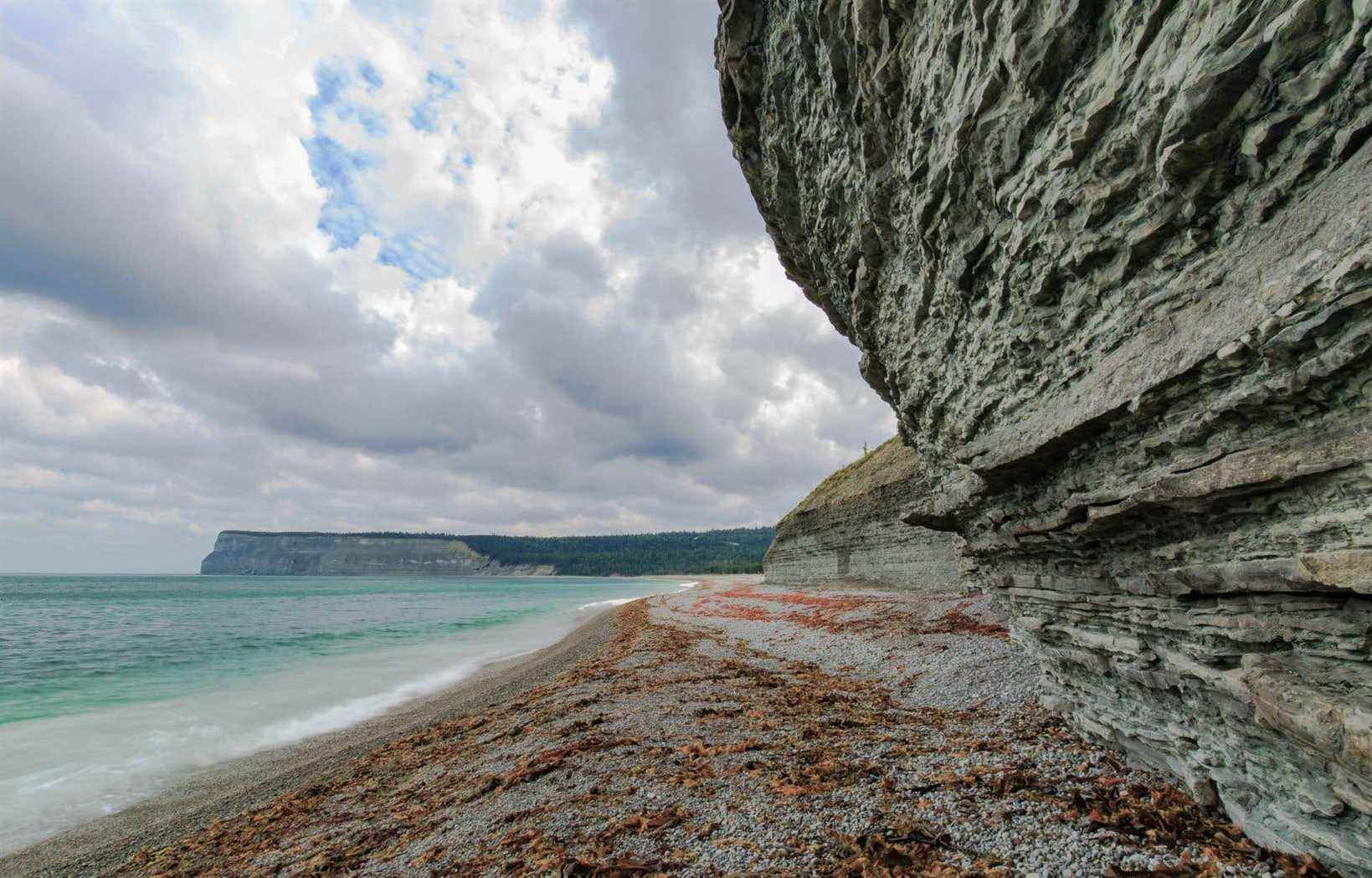Now submitted to UNESCO with a view to possible recognition as a world heritage site, Anticosti Island could become a “must-see destination”, according to its mayor, Hélène Boulanger. The Legault government also promises to protect the majority of the territory of the island, while authorizing the continuation of logging. And for the moment, no direct maritime service project is in sight.
“Our common goal is to see Anticosti inscribed on the World Heritage List in 2023 and thus offer this natural jewel to all of humanity,” summed up the federal Minister of the Environment and Minister responsible for Parks Canada on Friday. Steven Guilbeault. The latter participated in the official announcement of the deposit of the candidacy of the island, in the company of ministers of the Legault government and local elected officials.
This candidacy is essentially based on the “outstanding universal value” and “worldwide recognition” of its geology. “Anticosti is the best natural laboratory on the planet to study fossils and sedimentary layers from the first mass extinction of life on Earth at the end of the Ordovician. The abundance, diversity and state of preservation of the fossils are exceptional. Protecting this site means enabling world-class scientific work,” André Desrochers, scientific director of the island’s candidacy steering committee, explained on Friday.
Access to the island
For the mayor of the municipality of L’Île-d’Anticosti, Hélène Boulanger, a UNESCO World Heritage listing could above all serve as a tool for economic and demographic recovery for the small island community of some 200 inhabitants.
“We want to become an essential tourist region”, sums up the one who was elected in November, in an interview with the Homework. In this context, the candidacy should constitute “incredible leverage, in addition to giving us global visibility. It should therefore lead to significant activity. Ms. Boulanger also points out that Anticostians are “extremely favorable” to this project, contrary to the debate sparked by the oil saga of the last decade.
However, the challenges for the future are significant, recognizes the mayor, starting with access to the largest island in Quebec (16 times the area of Montreal). After analyzing a maritime service project that would have linked Anticosti to the North Shore and Gaspésie, the Legault government dropped the project in 2020. According to an analysis by the Société des traversiers du Québec, this solution would have been “very expensive and not optimal”. However, the government has offered funding to improve air service.
For the mayoress of Anticosti, the UNESCO candidacy should be an opportunity to return to knock on the door of Quebec. “We will have to develop more capacities to come to the island. This will therefore be an opportunity to relaunch projects”, according to her. Ms. Boulanger adds that the local “infrastructures” will also have to be improved. This is the case for the accommodation capacity, but also for access to vehicles and the hiking trail project which should make it possible to cover certain sectors of the island.
Logging
Quebec Environment Minister Benoit Charette also promised Friday to advance the plan to protect the vast majority of the island in the coming months. Protection already represents a third of the island, where more than 40,000 white-tailed deer live, as well as several other wildlife species. Anticosti has 25 salmon rivers, but also one of the highest concentrations of bald eagle nesting sites in Quebec.
However, the protective measures promised by the Legault government do not provide for a cessation of commercial logging on the island. Is the designation of the island as a “protected area” compatible with the cuts? “It’s a bit like humans who are enclosed and it’s the fauna that we want to proliferate. The forestry portion on Anticosti is carried out to ensure that wildlife can feed, while working on the entire forestry file, ”replied Friday the Minister of Forests, Wildlife and Parks, Pierre Dufour.
In 2019, his ministry had rejected a project to protect the perimeter of the island, where the best fossil sites are located, which directly threatened Anticosti’s candidacy for UNESCO. The ministry finally accepted the establishment of a one kilometer protective strip, from the shore towards the interior of the island.
In a letter sent in June 2021 to the government of Quebec, the international organization which sets the rules to be respected for a protected area to be recognized as such had warned the Legault government against the continuation of logging on Anticosti, judging them incompatible with the protection of the territory.
“We would like to remind the Government of Quebec that the criteria of the International Union for Conservation of Nature do not allow, in any case and under any conditions, industrial activities, such as clearcutting, in any of the categories of protected areas, regardless of their specific purposes”, stressed the letter from the International Union for Conservation of Nature (IUCN).
Year in and year out, approximately 100,000 cubic meters of wood have been harvested on Anticosti in recent years, as part of cuts described as “clearcuts” by the Society for Nature and Parks, based on photos taken in 2020. It is not yet known what the precise nature of the cuts that will be maintained on the island will be. But the Legault government intends to carry out a “pilot project” there which should allow the establishment of a “sustainable use protected area” (APUD), a new category of protection which was created by the caquist government.
